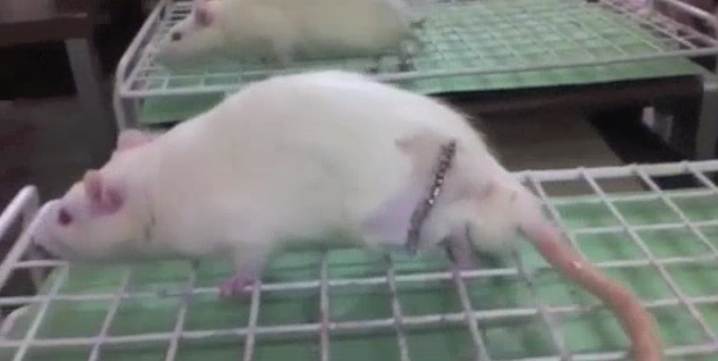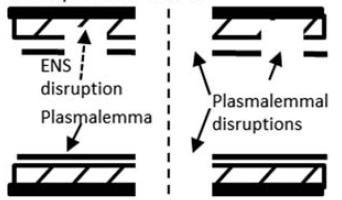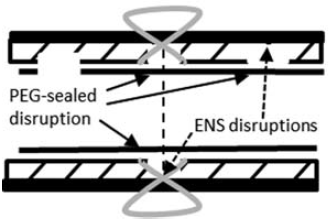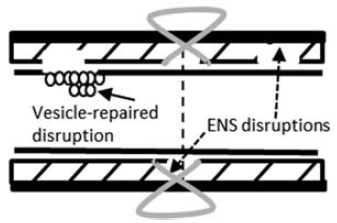New procedure repairs severed nerves in minutes, restoring limb use in days or weeks
February 6, 2012

After severance of rat sciatic nerves, functions can be restored in minutes to days (credit: G.D. Bittner et al./Journal of Neuroscience Research)
Scientists have developed a new procedure to repair severed nerves that could result in patients recovering in days or weeks, rather than months or years.
They used a cellular mechanism similar to that used by many invertebrates to repair damage to nerve axons.
“If further developed in clinical trials this approach would be a great advance on current procedures that usually imperfectly restore lost function within months at best,” said Professor George Bittner of the University of Texas.
The team studied the mechanisms all animal cells use to repair damage to their membranes and focused on invertebrates, which have superior ability to regenerate nerve axons compared to mammals. An axon is a long extension arising from a nerve cell body that communicates with other nerve cells or with muscles.
This research success arises from Bittner’s discovery that nerve axons of invertebrates that have been severed from their cell body can reconnect proximal and distal ends of severed nerve axons within seven days, allowing a rate of behavioral recovery that is far superior to mammals. “In mammals, the severed distal axonal stump degenerates within three days and it can take nerve growths from proximal axonal stumps months or years to regenerate and restore use of muscles or sensory areas, often with less accuracy and with much less function being restored,” said Bittner.
The team was able to repair severed sciatic nerves in the upper thigh, with results showing the rats were able to use their limb within a week and had much function restored within 2 to 4 weeks, in some cases to almost full function.
How to repair severed nerves
1. Apply hypotonic saline containing antioxidants to open severed axonal ends and prevent resealing.

2. Apply polyethylene glycol (PEG) (a.k.a. antifreeze) to open apposed ends and induce their membranes to flow rapidly into each other.

3. Apply Ca2+-containing isotonic saline to seal any remaining holes.

“We used rats as an experimental model to demonstrate how severed nerve axons can be repaired. Without our procedure, the return of nearly full function rarely comes close to happening,” said Bittner. “The sciatic nerve controls all muscle movement of the leg of all mammals and this new approach to repairing nerve axons could almost certainly be just as successful in humans.”
To explore the long term implications and medical uses of this procedure, MDs and other scientist-collaborators at Harvard Medical School and Vanderbilt Medical School and Hospitals are conducting studies to obtain approval to begin clinical trials.
“We believe this procedure could produce a transformational change in the way nerve injuries are repaired,” concluded Bittner.
Ref.: C.S. Spaeth et al., Cellular mechanisms of plasmalemmal sealing and axonal repair by polyethylene glycol and methylene blue, Journal of Neuroscience Research, 2012 [DOI: 10.1002/jnr.23022]
Ref.: G.D. Bittner et al., Rapid, effective, and long-lasting behavioral recovery produced by microsutures, methylene blue, and polyethylene glycol after completely cutting rat sciatic nerves, Journal of Neuroscience Research, 2012 [DOI: 10.1002/jnr.23023]